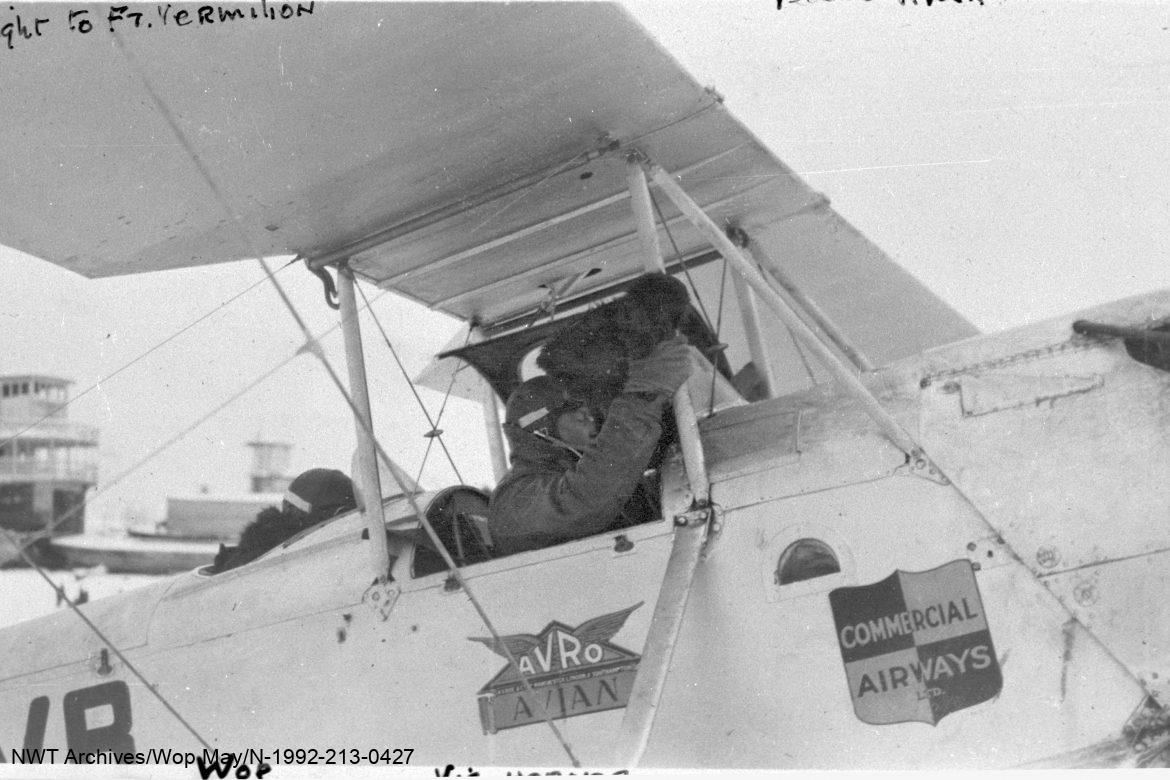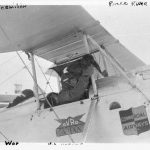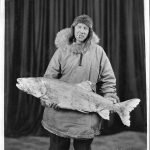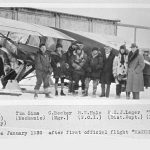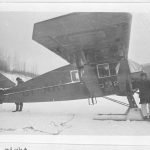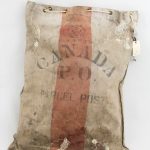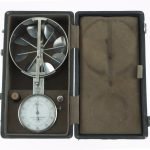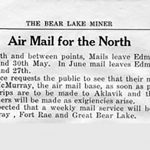1929
Wilfrid Reid ‘Wop’ May
One of the Northwest Territories’ most famous bush pilots was Wilfrid Reid ‘Wop’ May. Born on April 20, 1896, in Carberry, Manitoba, May was raised and educated in Edmonton. He acquired his unusual nickname early when his cousin tried to say Wilfrid; it came out ‘Woppie,’ and the shortened form ‘Wop’ stuck.
In 1916, May joined the Canadian Army as a machine gun instructor and went overseas with the 202nd City of Edmonton Battalion. He applied for a transfer to the Royal Flying Corps, and after receiving instruction as a pilot, he joined the 209th Squadron. May’s 13 German aircraft ‘kills’ and his close encounter with German ace Baron Manfred von Richthofen, the ‘Red Baron,’ made him famous.
May joined Imperial Oil Limited in 1920 and was instrumental in their use of airplanes in the early development of the Norman Wells oil field. In January 1929, May flew a medical emergency flight when he piloted an open cockpit airplane under severe winter conditions from Edmonton to Fort Vermilion to deliver anti-diphtheria serum. People were vaccinated in Little Red River and the Fort vermillion area, and an epidemic was avoided. The courage and bravery translated well into the new radio media, and soon the mercy flight story was heard worldwide.
May continued to put his fame to use when he formed a business called Commercial Airways. This company was awarded the airmail contract to remote northern Alberta and Northwest Territories communities. May flew the first mail delivery flight into the Northwest Territories on December 10, 1929. This was the longest airmail route in the world, covering every community along the Athabasca, Slave and Mackenzie Rivers from Fort McMurray to Aklavik, a distance exceeding 2600 kilometres. The route is especially impressive, considering much of the flying was done in the cold and darkness of northern winters. The advent of airmail in the northern latitudes allowed access to southern goods and news much quicker and easier, assisting businesses and connecting families.
Canadian Airways bought Commercial Airways, and May stayed on as a pilot. Once again, he became the focus of a news-hungry public when he flew a Canadian Airways Bellanca during the 1931 search for the Mad Trapper of Rat River. He helped unravel the mysterious footprint patterns by noticing a set of footprints leaving a caribou trail. From the late 1930s to the early 1950s, May held executive positions with Canadian Airways and Canadian Pacific Airlines. On June 21, 1952, at age 57, he died of a heart attack while hiking in Utah.
In 1974, Wilfrid Reid ‘Wop’ May was inducted into the Canadian Aviation Hall of Fame in recognition of “his aeronautical brilliance in the cruellest geographical arenas” and for promoting the role of the airplane in the development of Canada’s north.
